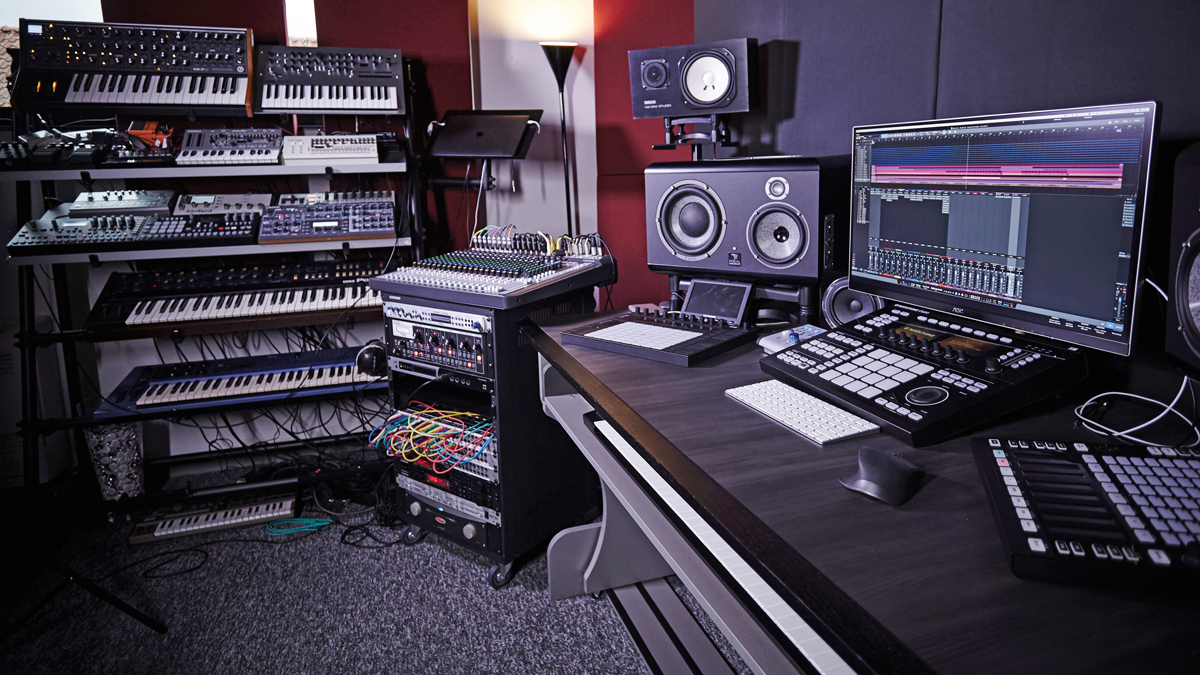Producer Masterclass - Tom Hades: “I was a hardware guy from day one. I love hands-on music-making”
The Belgian techno badman reveals his workflow secrets - and creates an entire project for us from scratch in Ableton Live
MTS 2020: Traditionally, Belgium has produced some of the battiest techno around, and carrying on that grand tradition is warehouse veteran Tom Hades. With releases on Drumcode, Suara and Harthouse, he’s established himself as one of the Low Countries’ premier producers, and back in 2018, we had him make us a complete track from scratch in his stylish studio.
How did you get involved in making electronic music?
“I began experimenting when I was 12 or 13 years old. I had a neighbour who had an Amiga 500, and we tried OctaMED, which was tracker software - we thought it was a game! The process triggered something within me. I was like, ‘Heck, it’s nice you can get something out of a computer! It’s not real music... but it’s electronic music!’
“I saved up and bought a Roland MC-303 Groovebox, plus more gear. Then, when I was 15 or 16, a school friend, DJ/producer Redhead, got me in contact with [Belgian techno stalwart] Marco Bailey. We started working together, and made our first release together - which was four tracks - in one evening!
“From that moment, everything moved quickly: we signed the tracks, and he was at a distributor with a DAT tape two days later, asking me for an artist name which I only had about five minutes to come up with...”

Moving on, you have an extremely impressive studio here.
“I was a hardware guy from day one. I love hands-on music making. We used to record everything from hardware into Cubase VST, then process those signals with plugins - that was my way of working back then. But like a lot of things, you want to change your way of working as time goes on... I get bored quickly!
Want all the hottest music and gear news, reviews, deals, features and more, direct to your inbox? Sign up here.
“I’m always challenging myself to find something new: new methods, new ways of making sounds. That’s why I gradually migrated over to the digital world - and also because I started to perform live. I’d already been a DJ for a while, but I liked the production side more, hence the live stuff. I used a lot of hardware - I would have two flightcases with me, and everything was connected via MIDI, which brought plenty of problems. But then I tried the first version of Ableton Live. Sequencing patterns in there and combining them with the hardware seemed so natural.”
How long did it take for Live to become your primary production software choice?
“I only switched from Cubase when version 4 or 5 came out. The reason why I switched is maybe a little bit lazy to be honest: I had to export everything out of Cubase to Live for my live show... so I said, ‘why don’t I just make all my tunes in Ableton?’
“I see Live as a jamming tool for making electronic music. You can get started in seconds if you know what you’re doing. That gives me such a creative feeling.”
How do you keep on top of music technology developments?
“There are plenty of channels... on YouTube alone I’m signed up to 200 channels: the obvious, professional ones like Computer Music; but also guys who make their videos at home, people who just play around with plugins and approach them in a different way.”
In this exclusive tutorial and video session, Tom Hades creates an entire slammin’ techno track for us from scratch.
This Producer Masterclass originally appeared in Computer Music 255 (May 2018)
Computer Music magazine is the world’s best selling publication dedicated solely to making great music with your Mac or PC computer. Each issue it brings its lucky readers the best in cutting-edge tutorials, need-to-know, expert software reviews and even all the tools you actually need to make great music today, courtesy of our legendary CM Plugin Suite.
